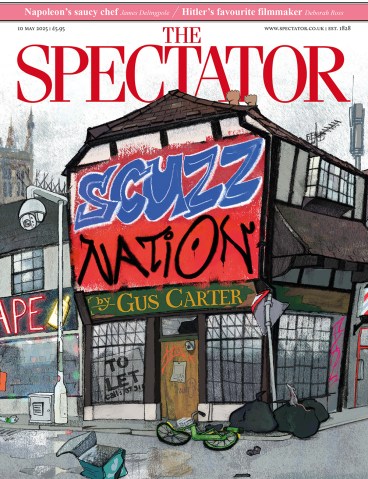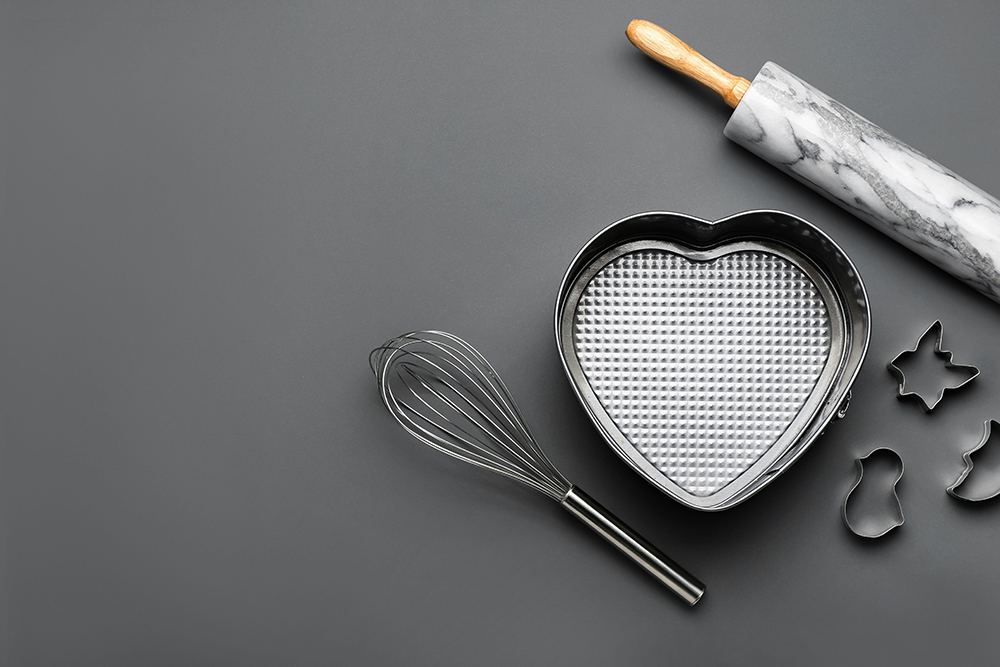
When Bee Wilson’s husband abruptly called time on their 23-year marriage, she was left with a house full of memories embedded in the everyday objects around her. Two months after his departure, the heart-shaped tin of the title – in which she’d baked their wedding cake – clattered to the floor for no apparent reason. Symbolic or what?
That leap inspired another, sending Wilson on a quest to explore our relationship to objects, specifically kitchenalia. After years of use, all possessions hold symbolic memories and actual DNA, and kitchen tools are handled more than most household items, from wooden spoons and cooking pans to salt shakers and china. And, she explains, kitchenware is a form of currency between family members, whether given by a child to a parent or the other way round:
What is really being exchanged is an idealised memory of the family dinner table. When a child leaves home, giving them something for the kitchen can be a way to connect them with the meals they have left behind and a rite of passage acknowledging that they are in charge of their own cooking now.
Nigella Lawson has praised Wilson’s ability to marry intellectual rigour with emotional openness, and that skill serves her well here. Her research is thorough. Not only has she read the studies and spoken to the social scientists conducting them, but stories have been sourced from around the world, shared here to break up and underscore the emotional impact of Wilson’s own history – and its universality.
These stories are delivered tapas-style, in short, poignant chapters getting to the heart of love and loss. There’s an education to be had, too, whether she’s writing about the surprising origins of cacao farming, the Maori belief that to really prove you own something you have to lick it, or the discovery that a Wedgwood teapot she fell in love with on eBay was designed by her grandfather, Norman Wilson. A section on soup tureens – Wedgwood’s Kutani pattern, to be precise – sparks contemplation about the complexity of family alliances, and the realisation that compromises we make to keep the peace wind up compromising parts of ourselves.
‘Assuming it isn’t made of precious metals, nothing gives an object more personal value than the memories it carries,’ writes Wilson. People don’t behave rationally around their things. Objects are markers of identity and narrative prompts for the stories of our lives.
Treating possessions as if they are charms is one way to gain a semblance of control in uncertain situations, and perhaps explains why we feel the need of them even more at times when our equilibrium is in question. The Hungarian-American psychologist Mihaly Csikszentmihalyi summed it up when he wrote: ‘Possessions tell us things about ourselves that we need to hear in order to keep ourselves from falling apart.’
If we agree that people imprint on objects, then no wonder we cling to possessions as connections to loved ones or remembered emotions and events. Academic research shows that humans have a fundamental need to store memories, values and experiences in objects, because doing so safeguards them against memory loss and keeps friends and family close even when they are not. Wilson cites the consumer scientist Russell Belk, whose work demonstrates that personal objects allow the past to be savoured, handled and safeguarded, no matter how far from home you end up. (But never fear! We can alter those memories, as Wilson proves by turning her wedding ring into the world’s tiniest pastry cutter.)
While divorce might have been the inciting incident, the loss Wilson probes most poignantly is that of her mother, first to dementia and ultimately to death. Wilson writes: ‘Your spectre, far more than my ex-husband’s, was the one that hung over my kitchen; he had chosen to leave but you had gone unwillingly.’ Tellingly, an early sign of her mother’s illness was her certainty that someone had stolen her beloved silver toast rack – and only that – from her home. Another red flag was her insistence on replacing her broken Aga with another, though she could no longer navigate cooking on one. But of course that Aga was more than an oven, it symbolised rebuilding her life after divorce from Wilson’s father.
This is a book best enjoyed piecemeal. Though the stories cover the globe, the thematic link gives them a samey quality that diminishes their impact when taken cumulatively. I implore you not to let that happen, for there’s much here to spark interest and touch the heart. I for one will not easily shake off the image of Wilson driving around with a Sharpie pen in her mouth to create a smile that she’s unable to summon naturally.







Comments